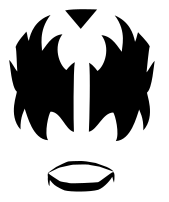We begin our series on the topic of content calendars with identification of the core components of a content calendar. Content and editorial calendars are great tools that can be used for mapping and monitoring your content that you create for your digital audience. Editorial calendars are used to define, plan and manage the process of creating content, from initial concept through content development, publication and content promotion.
Every Web marketing team / content team should be using an editorial calendar as part of the content curation process.
What’s the big deal about Content Calendars anyway?
While there are a variety of formats that a content calendar can be created in, for those on a limited budget, a simple spreadsheet will suffice. The fact is that your editorial calendar is more than just a simple spreadsheet. Regardless of the format, your content calendar can act as an iterative planning tool that includes timelines which can help:
- Identify upcoming content opportunities
- Improve the frequency of publishing (i.e. new blog posts)
- Provide direction for your content team and copywriters
- Identify semantically relevant topics to focus on
- Identify and serve up content of interest for your audience
- Define your content strategy (both online and offline)
- Identify areas for repurposing content
- Manage the flow of content being created both internally and from external writers
You content calendar is one of the most important tools in your digital marketing arsenal.
Core Components of a Content Calendar
 You can make your content calendar as robust as you need to, but there is something to be said for the KISS (Keep It Simple Stupid) theory.
You can make your content calendar as robust as you need to, but there is something to be said for the KISS (Keep It Simple Stupid) theory.
Image Source: https://en.m.wikipedia.org/wiki/File:KISS_devil_face.svg
There is no need to over complicate your content calendar. Especially as it may be shared with various teams. Here is what I consider to be the core elements of a content calendar. Note: The difference you might notice here is the focus on the built-in optimization of the content.
- Topic / Title – this is the “concept” of the actual content that will be created. Others may refer to this as the headline, or simply title, but this column is the basic idea of what the content piece will become.
- Content Type – this consists of identifying the type of content to produce. In terms of Web content, there are various formats that your content can be created in, including:
- traditional webpage
- blog post
- article
- FAQ
- video
- infographic
- whitepaper
- case study
You will want to identify the type of content to be produced as resources requirements are identified to create, publish and promote the content.
- Due date – simply the date when the content is to be completed.
- Publish date – the expected release or launch date of your content. Keep in mind that it is always a good idea to get your content out in a timely manner especial if you are preparing content around a specific event or date. The publish date or simply “Date” column is when the content will be live on the desired web property. This can consist of a specific month (i.e. Sep. 17), a week (i.e. Week of October 2nd) or day (Oct. 7/17). Format the data based on your preference and style guide.
- Accountable – name of the resource/person that will be preparing, optimizing and publishing the content. This is useful if you need them to create additional, similar content in the future or need to follow up with the status.
- Proposed URL – the URL for the web property where the content will reside. Follow SEO best practices and ensure that the URL is both Search engine and user friendly.
- Primary Key Phrase – the main semantically relevant term that you wish to position the piece of content for. This is the core topic that your content is focusing on. Your primary key phrase may be included in your title/headline, with your page copy, in your URL or other areas related to your content piece. You will want to target keywords/topics that are semantically relevant to your audience, ideally have historical search activity and are term that you are able to build content themes around.
- Title Tag – as part of the optimization of your piece of content, follow SEO best practices and include the title tag that you want to use for your piece of content (170 characters or less please).
- Meta Description – include a column for the meta description to ensure that this element is populated for each piece of content you create. Some Content Management Systems (CMS) will auto-populate the meta tags for you, but if you are able to dictate what the description reads do it. This can help entice clicks from the Search Results pages when the page is indexed and ranking in Google and other search engines.
- Status – this should be limited in its options. Consider:
- Not started
- In progress
- In review
- Published
- Complete
- Call to action – identify the call to action that will be associated with this content. Is it a simple link, a CTA button, completion of a form, email signup, download? Each piece of content that you create should satisfy the need of the user, but it should also entice the user to perform a follow up action even if it is only clicking a link to read more)
- Promotion – this column is reserved for how you will promote the content as it goes live and once it has been published. Are there specific social media channels that will be used (twitter, Facebook, LinkedIn etc)? Are there any offline channels that will be promoting this content?
See that’s the big deal about content calendars.